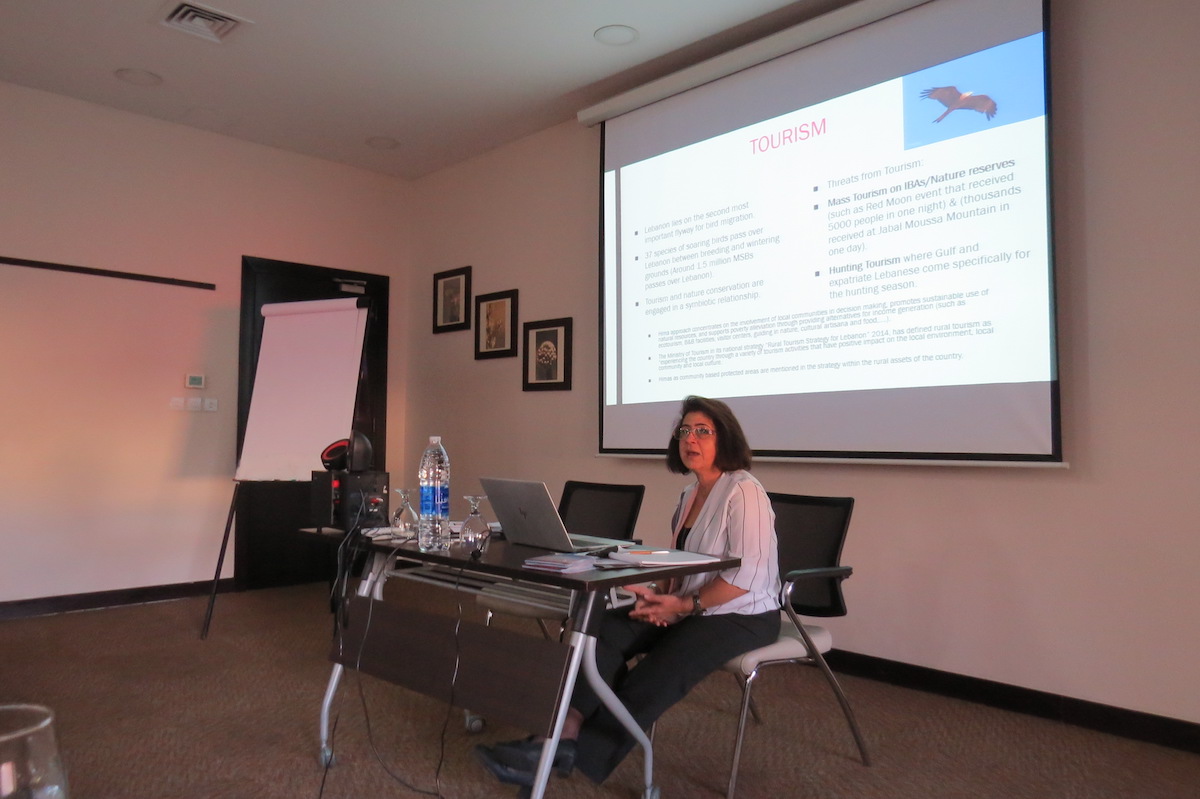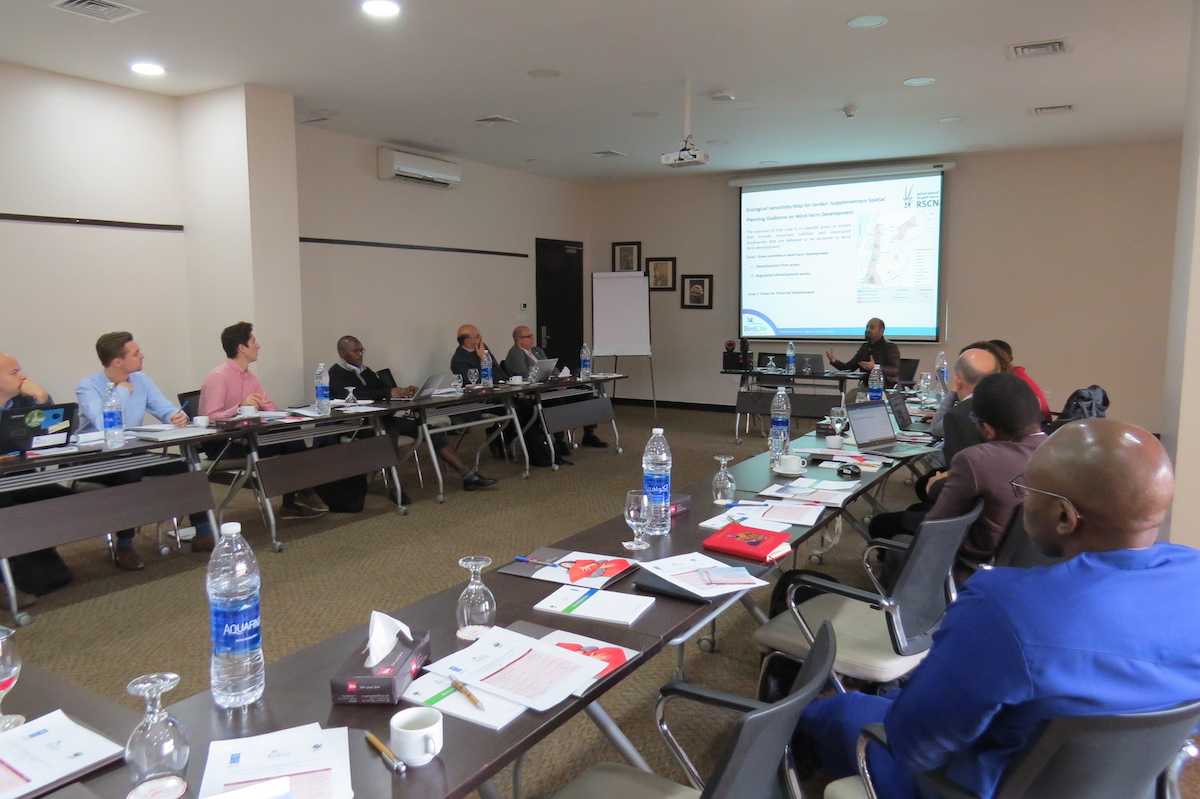
Partners come together to discuss plans for the Migratory Soaring Birds Project
6 BirdLife Partners from the Middle East & Africa have concluded today a 3-day meeting in Amman for a collaborative discussion on the progress of the Migratory Soaring Birds (MSB) Project, which is funded by The Global Environment Facility (GEF) and executed by the United Nations Development Program (UNDP).
Society for the Protection of Nature in Lebanon – SPNL is one of the 6 partners involved in the MSB stage II of the project, Assistant Director General Ms. Bassima represented SPNL at that meeting.

The MSB Project is aiming to mainstream conservation of migratory soaring birds along the Red Sea/Rift valley flyway, which hosts the migration of over 2 million birds through the region and is considered the second biggest Flyway in the world. Rendering targeted activities in two regions, a project of this magnitude will continue to have a significant impact on bird conservation & biodiversity in general.
Among the attendees was the Director of Conservation from BirdLife International, Richard Grimmett. When asked about the event, he stated that the project offers excellent opportunities for collaboration in bird conservation in the region because it is being achieved through partnerships and strategic alliances with private businesses, NGOs, governments, international organizations.
“It is great to be a part of this meeting to see the inspiring work done by partners through the Project across the region”. Grimmett said. “Protecting migratory soaring birds is a collective responsibility and the Migratory Soaring Birds Project does a great job embedding biodiversity in to the heart of developmental sectors, which are: Agriculture, Hunting, Energy, Waste Management & Tourism.” He added.
Mr. Osama Elgebaly, who is the National MSB Project Manager in Egypt, commented on the Project, “We are working with 5 different sectors that have the most effect on migratory soaring birds & their habitats, and we hope that decision makers and the people working in these sectors are more aware of the MSB issues through the Project.”

He added, “The Project is working to build the capacities of partners in different targeted sectors to fill the gap between the high demand on required qualifications and the current potential of expertise. For example, the Project has established a regional training center and quality assurance institution (Center of Environmental Excellence, CEE) in Gabel El-Zayt wind farms to provide training courses to all flyway countries and to develop technically tailored training modules on MSBs identification, pre and post construction monitoring for wind energy development, and shutdown on demand (SOD) system.”

Ambitiously, the BirdLife International UNDP/GEF Project aims at creating a neutral authority for certification and quality assurance for the whole conservation programs that are taking place along the flyway. The partners of the Project has been brainstorming for the last three days to review the work done under the Project & plan for an exciting next year, hoping to achieve high levels of bird conservation on the region and successful cooperation and conservation case faces some serious challenges.
It noteworthy that this meeting was a part of the second phase of the Project, which is planned to be completed by the end of 2020.